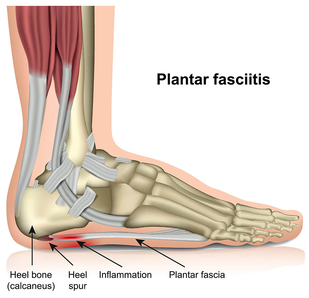
Plantar fasciitis is a common foot condition that causes pain and inflammation in the heel and bottom of the foot. It is often caused by overuse or strain on the plantar fascia, a band of tissue that connects the heel bone to the toes. The condition can be debilitating, making it difficult to walk or stand for long periods of time.
Chiropractic care is a holistic approach to healthcare that focuses on the diagnosis and treatment of musculoskeletal conditions. It can be an effective treatment option for plantar fasciitis, as it addresses the underlying causes of the condition and helps to relieve pain and inflammation.
One of the key ways that chiropractic care can help with plantar fasciitis is by addressing any imbalances in the foot, ankle, or leg that may be contributing to the condition. For example, if the ankle is misaligned or the foot is flat, this can put extra strain on the plantar fascia, leading to pain and inflammation. A chiropractor can use adjustments and other techniques to realign the foot and ankle, reducing the strain on the plantar fascia and helping to alleviate pain.
Another important aspect of chiropractic care for plantar fasciitis is the use of soft tissue therapies. These may include massage, stretching, and other techniques that help to loosen tight muscles and tendons in the foot and ankle. By releasing tension in these areas, a chiropractor can help to reduce inflammation and improve circulation, which can aid in the healing process.
Chiropractors may also recommend exercises and stretches to help strengthen the muscles in the foot and ankle. This can help to improve stability and balance, reducing the risk of future injuries and flare-ups.
In addition to these specific treatments, chiropractors may also recommend lifestyle changes to help manage plantar fasciitis. These may include changes to shoe gear, or changes in activity level.
In conclusion, Chiropractic care can be a effective treatment option for people suffering from Plantar Fasciitis by addressing the underlying causes of the condition, realigning the foot and ankle, reducing the strain on the plantar fascia and help to alleviate pain, and through exercises and stretches to help strengthen the muscles in the foot and ankle. As always, it is important to consult with a chiropractor to develop a treatment plan that is tailored to your individual needs and circumstances.
Chiropractic care is a holistic approach to healthcare that focuses on the diagnosis and treatment of musculoskeletal conditions. It can be an effective treatment option for plantar fasciitis, as it addresses the underlying causes of the condition and helps to relieve pain and inflammation.
One of the key ways that chiropractic care can help with plantar fasciitis is by addressing any imbalances in the foot, ankle, or leg that may be contributing to the condition. For example, if the ankle is misaligned or the foot is flat, this can put extra strain on the plantar fascia, leading to pain and inflammation. A chiropractor can use adjustments and other techniques to realign the foot and ankle, reducing the strain on the plantar fascia and helping to alleviate pain.
Another important aspect of chiropractic care for plantar fasciitis is the use of soft tissue therapies. These may include massage, stretching, and other techniques that help to loosen tight muscles and tendons in the foot and ankle. By releasing tension in these areas, a chiropractor can help to reduce inflammation and improve circulation, which can aid in the healing process.
Chiropractors may also recommend exercises and stretches to help strengthen the muscles in the foot and ankle. This can help to improve stability and balance, reducing the risk of future injuries and flare-ups.
In addition to these specific treatments, chiropractors may also recommend lifestyle changes to help manage plantar fasciitis. These may include changes to shoe gear, or changes in activity level.
In conclusion, Chiropractic care can be a effective treatment option for people suffering from Plantar Fasciitis by addressing the underlying causes of the condition, realigning the foot and ankle, reducing the strain on the plantar fascia and help to alleviate pain, and through exercises and stretches to help strengthen the muscles in the foot and ankle. As always, it is important to consult with a chiropractor to develop a treatment plan that is tailored to your individual needs and circumstances.

















